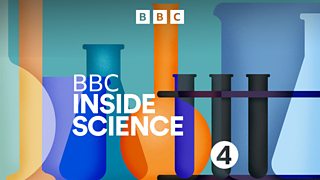Volcanic Nanoparticles - Seawater Greenhouses
Volcanoes may be large and explosive, but their effects are now seen to be pervasive in the most unlikely areas. Quentin Cooper investigates.
Volcanic Nanoparticles
How do volatile metals from volcanoes end up in polar ice cores? It has always been a mystery how trace metals, like mercury, with a volcanic signature find their way into polar ice in regions without nearby evidence of volcanic activity.
Now scientists think they have discovered the answer - volcanoes are a source of tiny nanoparticles. Until now no one knew that volcanoes did this.
Quentin is joined by Dr Tamsin Mather & Dr David Pyle, Department of Earth Sciences, University of Oxford, who have been leading the new research. These nanoparticles are small enough to be carried around the world by the wind and could be involved in the formation of clouds and have a role in reflecting solar radiation back into space. They may also 'seed' distant patches of barren ocean with nutrients. Volcanoes may be large and explosive but their effects are now seen to pervasive and at happening at the very smallest of levels.
Seawater Greenhouses
The world is running short of accessible fresh water. With agriculture accounting for some 70% of all water used, the shortage is closely linked to food production. Fortunately, the world is not short of water itself, itβs just in the wrong place.
Converting seawater to fresh water in the right quantities and in the right places offers the potential to solve water shortage problems, particularly in arid areas.
A team comprising an inventor, an architect and an engineer have proposed a new technology that could produce food, fresh water and clean energy in arid regions as well as re-vegetating large areas of desert.
The Seawater Greenhouse is an ingenious technology that creates a cool growing environment in hot parts of the world and is a net producer of distilled water from seawater.
Quentin is joined seawater greenhouse designer Charlie Paton, Seawater Greenhouse Limited, and by Michael Pawlyn, Exploration, an architect who specialises in βbiomimicryβ β designs that follow natural systems to solve problems.


